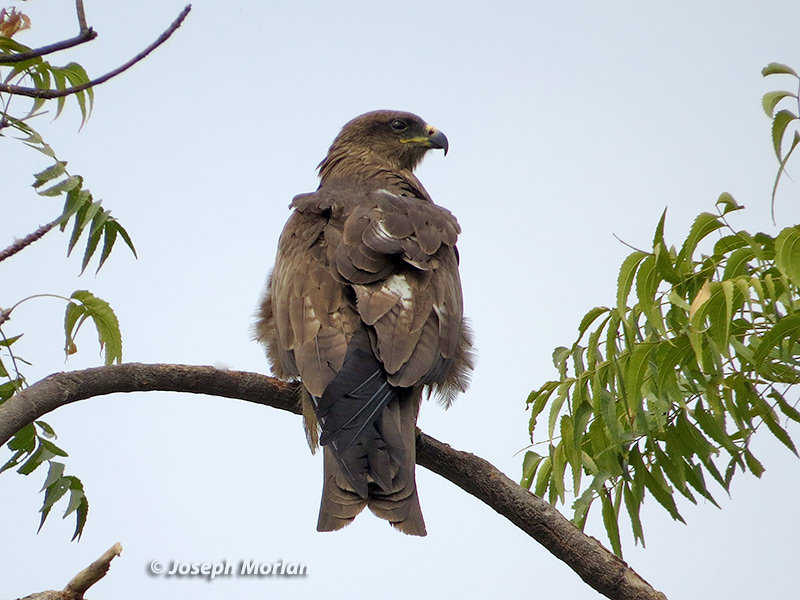 This bird in heavy molt
is an adult M. m. govinda characterized by yellow cere, dark head, deeply notched tail, and lack of rufous
coloration. It is an abundant resident throughout most of India. The name "Pariah Kite" formerly used
for this race is now considered an offensive relic of the Indian Caste system. These kites can become common near
garbage dumps or around human habitation.
This bird in heavy molt
is an adult M. m. govinda characterized by yellow cere, dark head, deeply notched tail, and lack of rufous
coloration. It is an abundant resident throughout most of India. The name "Pariah Kite" formerly used
for this race is now considered an offensive relic of the Indian Caste system. These kites can become common near
garbage dumps or around human habitation.
- Black [migrans Group] - Partly migratory; Palearctic to India
- Black-eared [lineatus/formosanus] - Highly migratory; East Asia
- Yellow-billed [aegyptius/parasitus] - Partly migratory; Africa
In Northern India both Black and Black-eared types occur in migration and winter. Black-eared types are paler,
with more contrasting dark cheek patch and a bluish cere and have conspicuous white underwing patches. Canon PowerShot
SX50 HS.
References:
DeCandido, R., Subedi, t., Siponen, M., Sutasha, K., Pierce, A., Nualsri, C. & Round, P.D. (2013) Flight identification
of Milvus migrans lineatus 'Black-eared' Kite and Milvus migrans govinda 'Pariah' Kite in Nepal and
Thailand. BirdingASIA 20:32-36
Orta, J., Marks, J.S., Garcia, E.F.J. & Kirwan, G.M. (2016). Black Kite (Milvus migrans). In: del Hoyo,
J., Elliott, A., Sargatal, J., Christie, D.A. & de Juana, E. (eds.). Handbook of the Birds of the World
Alive. Lynx Edicions, Barcelona. (retrieved from http://www.hbw.com/node/52978
on 4 July 2016).
Rasmussen, P.C. & Anderton, J.C. (2012) Birds of South Asia. The Ripley Guide. Vols. 1 and 2. Second Edition.
Smithsonian Institution. Michigan State University & Lynx Edicions, Washington. D.C., Michigan & Barcelona.